It is a beautiful and dangerous plant. Our ancestors respectfully nicknamed the tree of life and death. The perennial preserved to the present day and is listed in the Red Book. We are talking about the teaser of the berry, or the coniferous evergreen testicular tree. Is it possible to grow a spectacular bush on their own and how to contact him, tell me in the article.
Tiss Berry: brief reference
All parts of the plant - roots, trunk, needles, berries and antique cones - poisonous and very dangerous for a person. Does not contain poison only sediments of the plant. This is the main thing that you need to warn people interested in a bush who have small children or curious pets. Penetrating into the body, the seeds of Tis are affordable: strong pain in the stomach, nausea, vomiting, fainting - the main signs of poisoning. Poisonous substances taxin and ephedrine damage the mucous membranes of the digestive tract, violate cardiac activity and can cause a respiratory stop, so often cases of such intoxication ends with a fatal outcome. The degree of poisonism increases with the adults of the tees.
Attractive coniferous tree in the photo - Tiss Berry. Compared to other trees, it grows extremely slowly, but is distinguished by enviable longevity: according to different sources, the plant lives from 1.5 to 4 thousand years. The root tess system is very powerful and introduced deep into the ground. Unprecedented power is largely due to the fact that the roots are covered with so-called minerals (fungocorn) and therefore get a beautiful mineral feed. The barrel covered with a brown-red bark, over time grows up to 2.5 m in diameter. The average height of the tissa varies from 10 to 20 m, the individual copies grow up to 28 m. Thick crown forms juicy green needles with a dark tint. Single seed cones plants are pollinated in the late spring.
The homeland of tees of berry is considered to be the countries of South, Western and Central Europe. It can be seen in Iran and Africa, in the Carpathians, in the Caucasus, in Belarus and the Baltic States. In our country, the Tiss Berry grows in the mountains of the Crimea and on the territory of the Kaliningrad region.
Berry Tiss: Description of varieties
In the family of tissue long-livers about 800 species of plants. The most famous and popular types of Tisa: Canadian, pointed, medium and berry. Let's get acquainted with the most interesting types of tees berry.
Tiss Berry David.
The ideal option when arranging a compact decorative garden. This is high (up to 2 m) colonum tree with strong vertical branches. The plant has a beautiful yellow needle, which is a pleasure to transform with the help of garden scissors. In order for the teasing berry David to remain yellow, it should not land him in a shady spot, where his needles will change the color to a salad one with time. The tree will feel comfortable in nutritive, wet soil, better than limestone. In the cold season, a frost-resistant plant rests and does not need special care. For the winter, young copies are covered, and adults are beautiful in winter even under the snow.
Tiss Berry David is often used as a living hedge, and also replenish the rocarium plant and container fittings. The plant is perfect for creating a bright accent in various garden architectural compositions.
Tiss Berry Fastigiat
The tiss-shaped berry Fastigiat can boast a narrow colonum-shaped form. The color of it is slightly curved insofe changing depending on the season: Black and green needles are becoming more light in the warm season. Before you buy a tess berry than this variety, it is important to estimate on the eye, where exactly placing such a giant so that a large park tree (height is 5 m, width 2 m) fits into the stylistic composition of the garden. True, the grade grows very slowly - up to 12 cm per year. In the landscape design of tess, berry flights are used as an independent vertical accent or addition to small groups of other landings.
Tiss Berry Fastigiat ferts with fleshy bright red berries. Brown-black seeds are ripened in autumn. The plant resistant tolerate shading, as well as the wind, smoke and other "annoying" factors. Adult copies are not against haircuts and transplants. Optimal soil for comfortable growth of the berry berry variety is lime or clay. But in the depleted nutritional elements of sandy soil the plant will have to be tight.
Tiss Berry Elegantissima
A ten-year copy of the plant grows up to 1 m in height at a diameter of 1.5 m, that is, the shrub has a view of a light yellow conifer with splashing and strong shoots. Closer to the winter of the needles whites. Foloblodes of the plant compared to other varieties look somewhat differently - have the look of bright red glasses. The frost-resistant culture is planted on areas protected from wind. The soil is suitable as lime and sublinous. Shadows and droughts The shrub is not afraid.
Tiss Berry Elegantissima successfully fits into group and solitary fit on the lawn and alpine slides. Also, the plant is used for container landings, when landscaping terraces and roofs.
Tis Berry Summergold
Translated from the English "Summergold" means "Golden Summer", and the shrub fully justifies this name. Thanks to the original yellowish needles, golden grade of the berry is not confused with other representatives of the family. Shrub grows very slowly, reaching 0.8 m in height and 1 m in gripping. Evergreen coniferous plant has an unusual crown shape resembling a pillow. Soothes on the trunk grow by the painter.
Tiss Berry Summergold is best to plant in areas filled with the sun, but the plant of this variety will be able to grow on a shaded place with fertile land. Shrub perfectly tolerate temperatures to -30 ◦C, but the very dried soil reacts very painfully.
Tiss Berry Summergold as if created for group landings. The most profitable shrub looks against the background of higher green plants. The variety dismisses without any problems, so it is often used to create a neat picturesque hedge. Tiss Berry Summergold will make special any mountaineering, rocarium or rocky garden.
Tiss Berry refontanes
The grade has a high degree of decorativeness, so once and forever won the recognition of gardeners and landscape design specialists. Compared with representatives of other grades, the berry refontanes are very miniature - adult specimens barely reach a height of 0.5 m. An attractive type of plant provides a beautiful arc form needle. The teases of this variety are very light-sounded, so in the shading refuse to grow. Sufficient soil moisture is the second condition for the successful development of the bush. Tiss Berry Refandens looks very elegant, therefore, it is a worthy batch by the plants of the Alpine slides and stone garden, it looks great close to the reservoirs.
Tiss Berry Washington
Strong specimens in adulthood reaches almost 2 m in height. The crown of plants of this variety is very big, spread, with running on each other shoots. The needles are yellow-green, bordered by the yellow stripe, with the approach of the cold, becomes bronze. In the care of the teasing, the berry Washington is not capricious: it differs in high rates of frost resistance and shadowability. May die if water is delayed in the soil. The variety is simply created for soliter and ordinary landings, as well as for living ingredients.
Tiss Berry: landing rules
Soil for tees berry
The teasing berry is growing rapidly and develops well in the nutritional and light soil with a trouble-free drainage system. Drainage can be prepared independently: mix the turf soil, peat and sand in the 3: 2 proportion: 2. The acidity of the bush environment does not matter. The berry tissue will be good both in acidic and alkaline soil. Sandy soil is categorically not suitable for the cultivation of the berry tees.
The high level of moisture in the ground will hurt the plant. Also, the tears will not tolerate the presence of heavy metals in the ground and it will be extremely bad feeling under the oppression of a polluted environment. Grow such culture in the conditions of the city - the task is almost impossible.
Distance for tess of berry
If it is decided to plant several tees at once in a row, it is important to maintain between them the gaps of at least 0.5 m. If there is plenty of space on the site, then the distance between the plants leaves about 2.5 m. When landing the root neck is not plugged.
Landing Pit for Tissa Berry
The depth of the wells for planting the berry tees is 0.6 - 0.7 m. Under the plants for the living hedge digging the trench of depth to 0.5 m. The trench for a double landing should be deeper - about 0.7 m.
In the fall, the tears are not planted, planting are engaged in early spring.
Tiss Berry: Recommendations for care after landing
Tussa tissa berry
The first time the plant fertilizes when landing. A universal mixture is introduced into the hole (100 g per square meter. M.) The following feeder is carried out after 1 year, reducing the amount of nutrient mixture to 70 g per 1 kV. m. Spring Tiss Berry reacts well to the fertilizer with a compost or humus. Before the ground, the land is drunk so that the roots get organic and mineral substances in full. In the summer season, the tissy berry is twice feeder with a cowboat solution.
Watering tees berry
In regular watering, the Tiss Berry needs the first 2 years of life in the garden. However, if the season was rainy, young coniferous bushes do not watered. In periods of prolonged drought, watering, naturally, is welcome - 1 time per month, 12 liters of water for each tree. Tissy - "clean" plants, so you need to clean them from dust from time to time. It will help to sprinkle, the procedure is carried out 2 times a month, not counting watering.
Jodge tees loosening
In the first 2nd - 3 years after landing, you need to carefully follow that the land around the trunk of the tess is not compacted. The soil loosened to a depth of no more than 15 cm. After each procedure, the soil is covered with a layer of peat or pinch with a width of about 8 cm. Note, during the first year after landing, the plants are best hiding under the peat layer 5 cm, it is additionally insulated from above Pytnik. Adult trees do without insulation even in winter.
Trimming tees berry
The bushes and trees of tees of berry need a regular solid trimming. The shoots shorten no less than a third. Forming haircut is carried out at the end of March - early April. Forming the crown is beginning in the first years of the growth of tees, but they are not very familiar with this. Unconditionally remove dry and damaged branches. A more thorough trimming is started in 5 - 7 years after landing, when the teasing is increasing the growth rate. Forming a crown, necessarily take into account the peculiarities of the appearance of each grade of the tees family. In order not to spoil the plant, before the first serious trimming, it is necessary to study its characteristics and the form of growth.
Diseases and pests tees berry
The berry tees is a fairly strong plant, but even he can suffer from such voracious pests, like tissue gallicle and tissue flasher. To drive uninvited guests, no chemistry do not do. Folk methods, as a rule, do not work - the teasing is needed instant and prolonged effect.
Tiss Berry: Methods of breeding
Multiply the number of tees of berry can be in two ways: seeds and stalling.
Tussis breeding of berry seeds
- The fruits of testicular trees and bushes are completely ripen in autumn, then they are collected.
- Berries are poured with water to remove the top layer and get seeds. The planting material is dried and stratified throughout the year. If you miss the period of stratification, the tees seeds "will sleep" in the land of 3 to 4 years before growing.
- To comply with the conditions of stratification, the seeds leave indoors with a low level of humidity at a constant temperature of about 5 - 6 ◦S. In warmer conditions, the landing material should not be kept, because its germination will decrease to a minimum.
- A year later, greenhouses are seeds of the tees of berry, after which they are placed on top of a layer of mulching in the form of needles. As a rule, in the spring, more than 70% of seedlings.
- In addition to cold stratification, seeds can be prepared for landing in a chemical way. The planting material is poured half an hour with sulfuric acid, then it is thoroughly washed with ordinary water and sowed. The chemical substance relaxes the outer shell of seeds, and the sponsors make it easier to break out. Often, the seeds of the berry tees are stratified in two ways.
Tissa breeding berry cuttings
- Chewing are engaged from April to May or from September to October.
- The rided branches are cut on the cuttings of 15-20 cm in length, leaving each by each 3 to 4 escapes.
- From the bottom of the cuttings, they are cut and planted in the planting containers, which then send to the greenhouses. Drawers under cuttings are filled with a mixture of large sand, peat and fine coniferous bark.
- In order for cuttings faster, they are treated with special growth stimulants.
- From transferred to the open soil of Cerenkov, full trees or bushes grow after 7 years, but the process is reduced by an average of 2 years, if you keep seedlings in the greenhouse.
Tiss Berry: Application in Landscape Design
Tiss Berry - a plant with a high degree of decorativeness. The coniferous perennial looks good around all year round, but it is especially beautiful in the fall, when he walked heavy garlands of bright red berries.
Landscape designers love evergreen plants for several reasons. Firstly, the tess grows slowly, secondly, his crown holds a long-standing form, thirdly, the perennial is an excellent background for other plants. Even the most modest mountaineering turns into an exquisite corner, if you build it against the background of berry tiss.
Next door to Western Tuya, juniper and decorative Japanese quissa, looks still more beautiful! Not "lost" culture and in the topium composition. Fortunately, the tears are growing slowly, so the gardener disappears the need to spin with the secateur around it all year round. The competent piece of side twigs in two accounts transform the plant, which in unobtrusive care responds with early kidney ever.

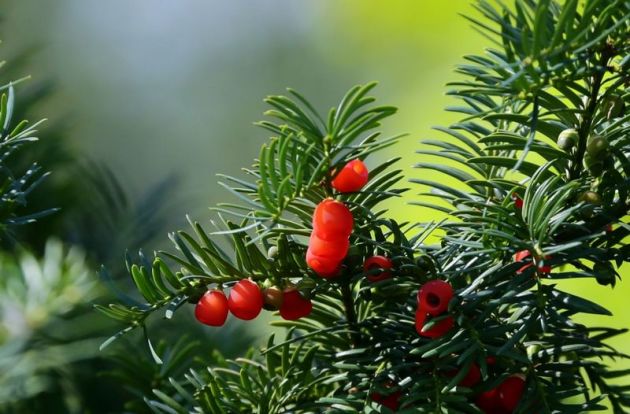
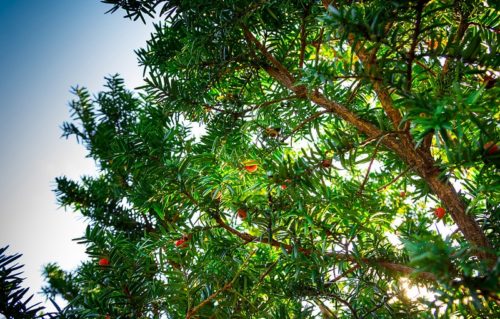
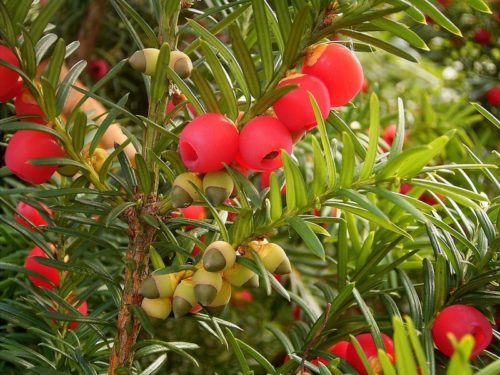
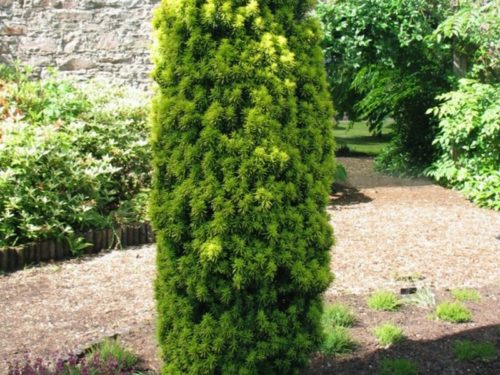

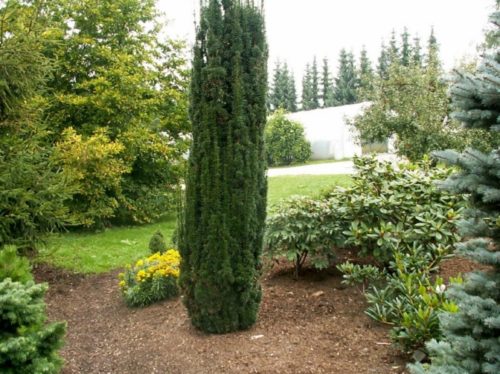
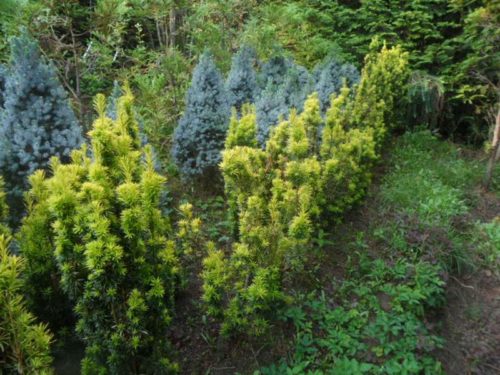
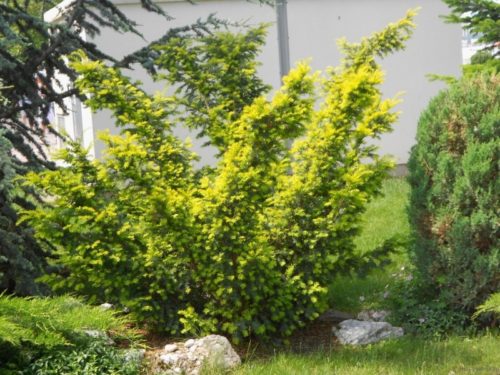
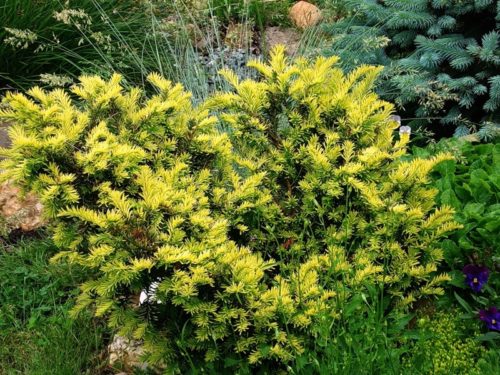
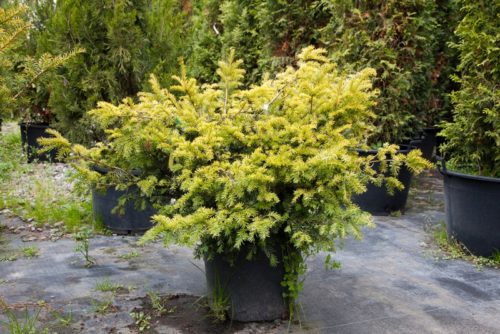
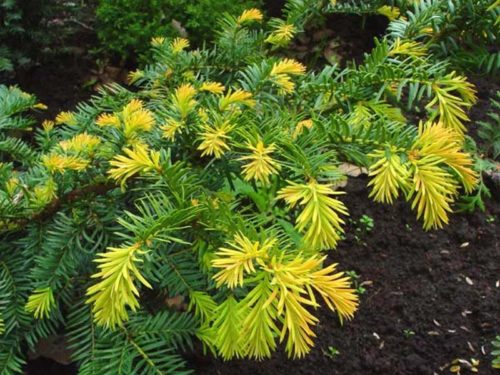
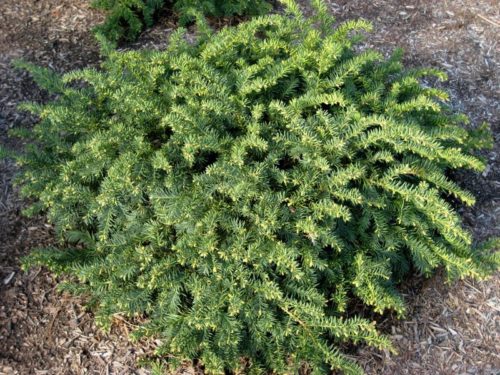
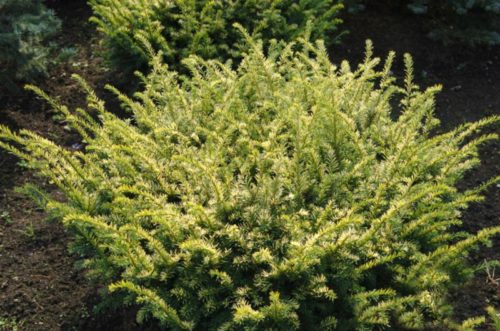
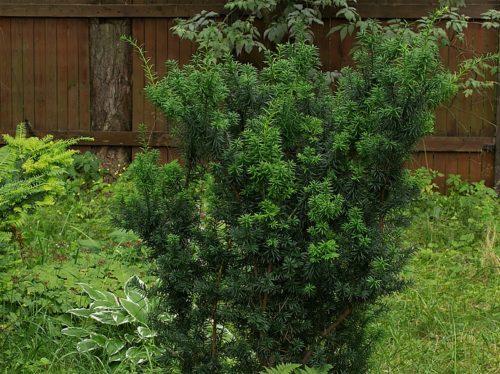

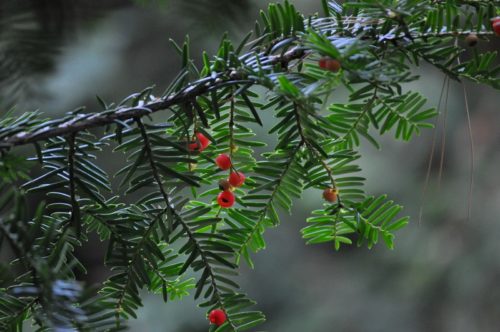
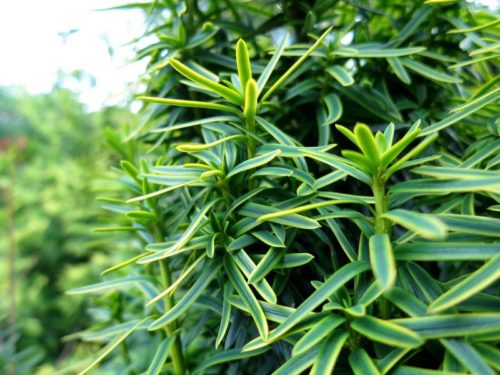
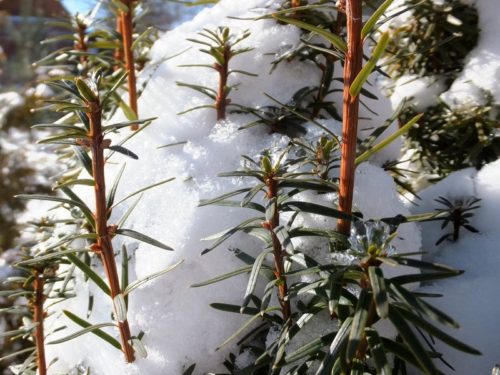
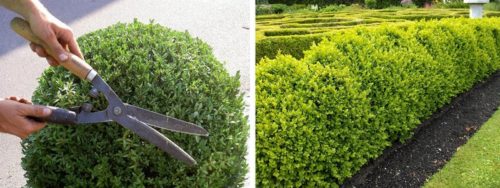
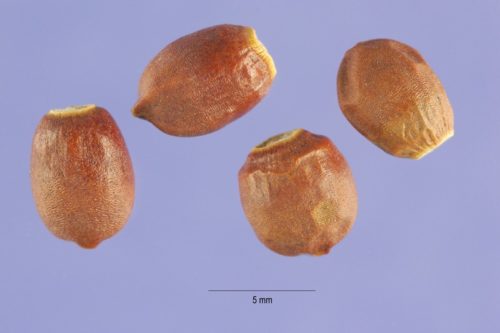
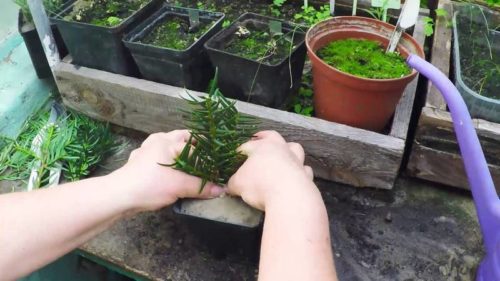
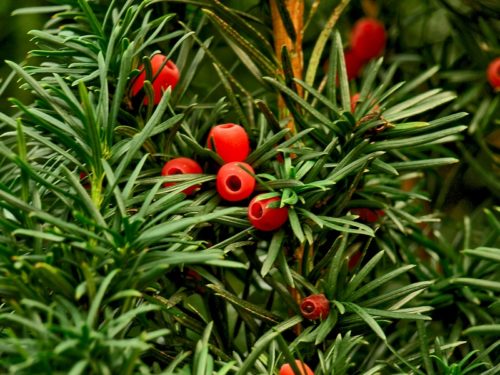
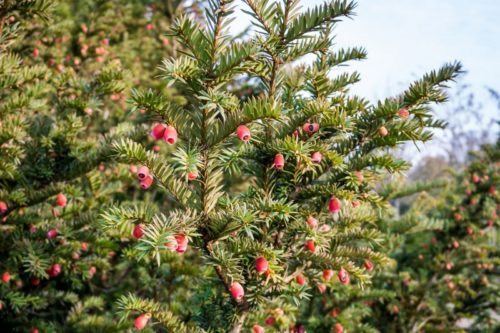
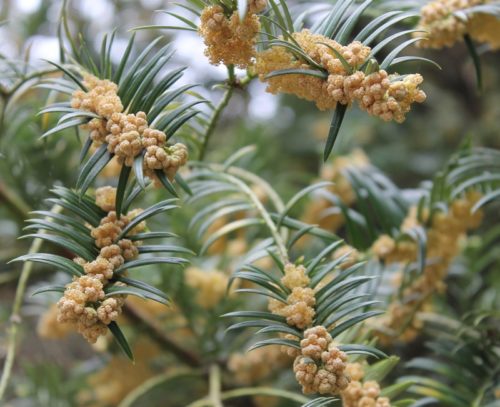
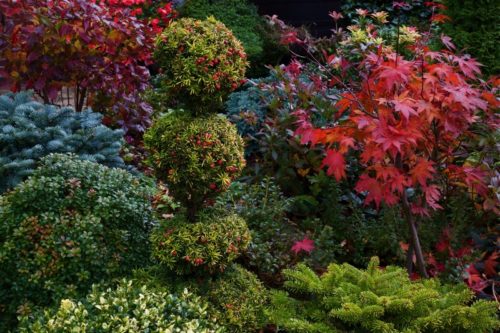
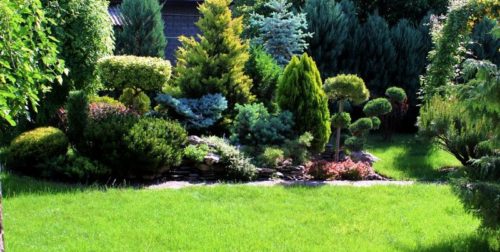
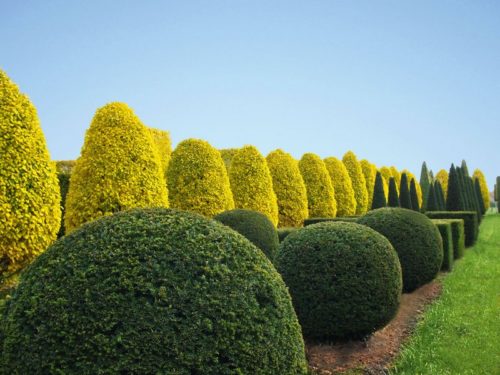
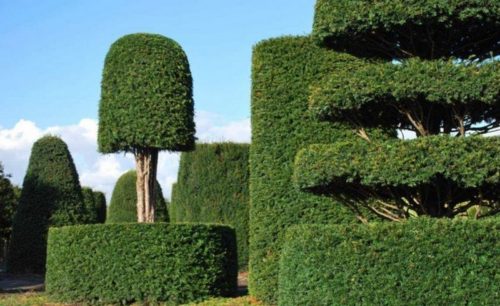












 Start a discussion ...
Start a discussion ...